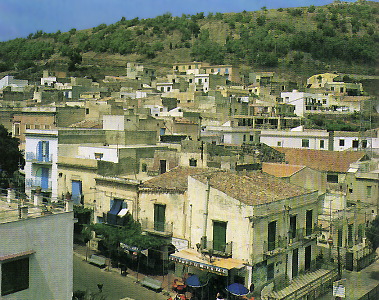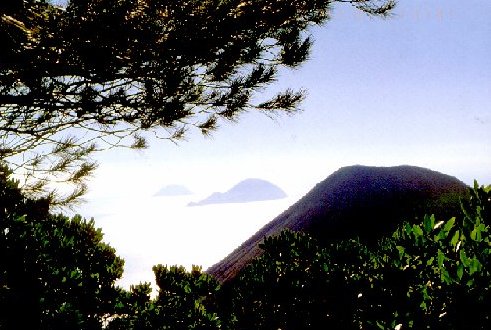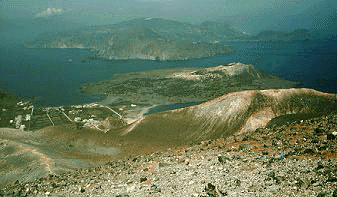Ustica
The
place my ancestors called home.
The colonizers
of Ustica in more recent times came from the island of Lipari and it's
surrounding islands. Lipari was colonized at least a thousand years before
Ustica and has a very interesting history, itself. In 1762-63, the King
of Italy sponsored the colonization of the tiny island of Ustica. One of
the appointed leaders of this action was Don Antonino Favaloro, husband
of Maria Bertucci. These people, chosen by the Franciscans priests of Lipari,
traveled to Ustica to begin it's colonization. Among the group selected
by the priests were: Bertucci, Favaloro, Maggiore, Palmisano, Picone and
many others, a total of 85 families with a head count of 399 people. Prior
to 1762, a group from Lipari attempted to colonize Ustica without the protection
of the King of Italy. Turkish pirate invaders came to the island of Ustica
and overpowered the group and removed them 
to the
North African country of Algiers. There, in Algiers, they were held captive
for 7 years as slaves: men, women and children. The families back on Lipari
tormented the Franciscans priests for the return of their loved ones. The
people, with the help of the priests from Lipari and the Franciscan priests
in Algiers, organized the safe return of the hostages for 7 ship loads
of chick peas and other food stuffs. The hostage takers eventually returned
their captives to Lipari. In 1762, this same group was asked to return
to Ustica again. But this time they were given protection by the King of
Italy. When the Turk pirates returned once again to enslave our dear ancestors,
the King's troops fought the criminals back into the sea. That was the
very last attack on Ustica.

Filicudi,
Alicudi and Salina.
A view of Filicudi and Alicudi
as seen from the island of Salina in the Eolie Island Group.

Lipari
(at top) as seen from Vulcano.
The Aeolian archipelago in the Tyrrhenian
Sea (west of mainland Italy and north of Sicily) is interpreted as a volcanic
arc. All of the seven main islands are volcanic in origin. Three volcanoes
in the arc are active: Lipari, Stromboli and Vulcano. Stromboli has been
erupting almost continuously for 2,000 years. Vulcano has had numerous
explosive eruptions, the most recent in 1888. The most recent eruption
on Lipari, the largest island in the archipelago, was about 1,400 years
ago.
This photograph was taken from
the the summit of Vulcano looking north to Lipari. The island of Lipari
rises from about 6,500 feet (2,000 meters) below sea level to about 2,000
feet (600 meters) above sea level. Vulcanello, in the middle ground, erupted
most recently in 1631. Photograph by Gordon MacDonald, U.S. Geological
Survey. The date of photograph is unknown.
Source of Information: T. Simkin,
and L. Siebert, 1994, Volcanoes of the World: Geoscience Press, Tucson,
Arizona.
Return
to the Home Page



